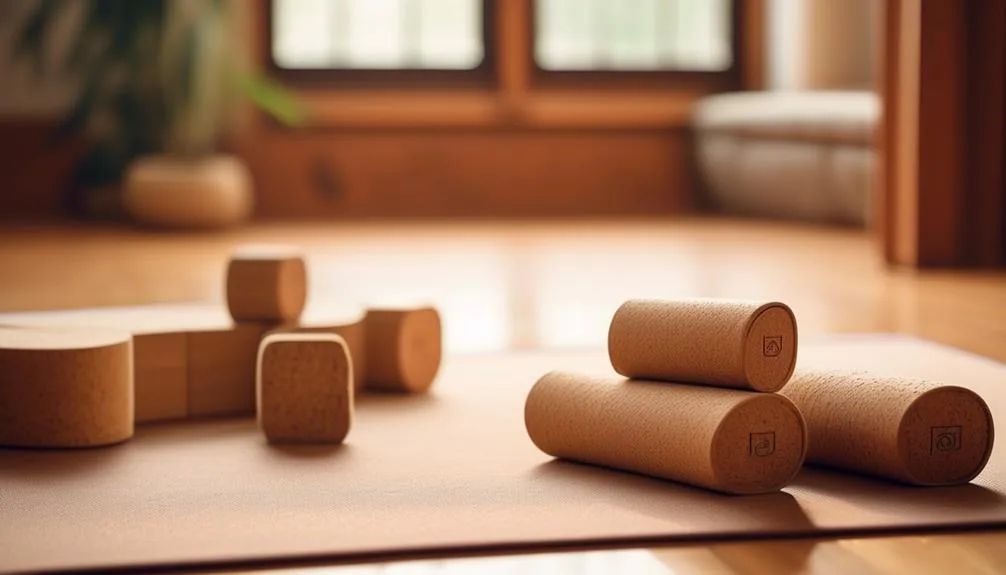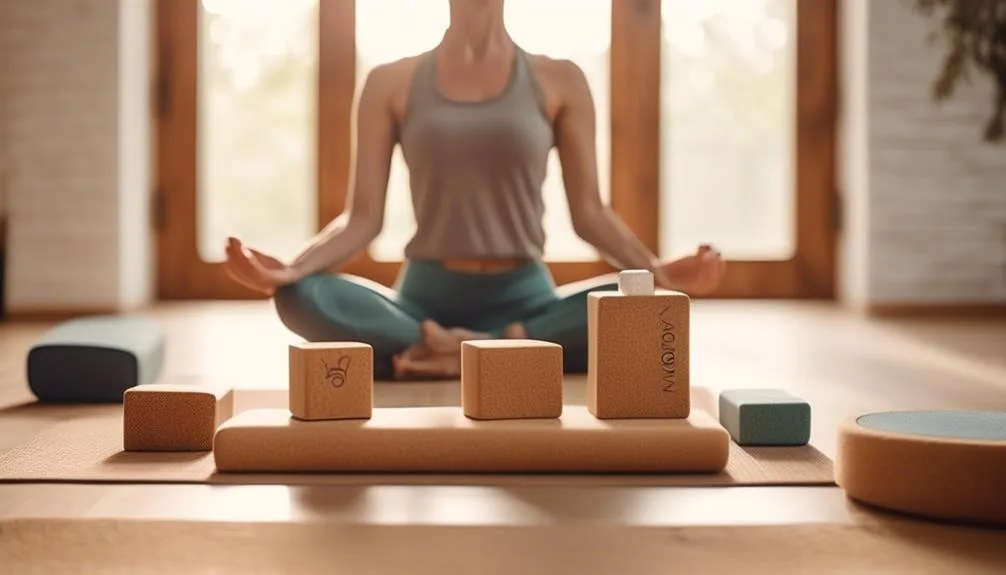Unlock Your Yoga Potential With Versatile Blocks
Yoga, with its millennia-old heritage, has long been revered for its capacity to foster a harmonious balance between the physical and the metaphysical realms of existence.
In the contemporary era, the practice has seen the integration of various adjuncts, among which yoga blocks have emerged as indispensable for practitioners seeking to deepen their engagement with this ancient discipline.
These unassuming tools, available in materials ranging from lightweight foam to sturdy cork, extend beyond their simple appearance, offering a multitude of benefits.
They not only render challenging poses more accessible, thereby democratizing the practice for individuals at varying levels of proficiency but also significantly enhance the safety and effectiveness of one's practice by promoting proper alignment and supporting the body in a manner that prevents strain and injury.
As we explore the nuanced roles that these blocks play in the evolution of yoga practice, it becomes evident that their utility is pivotal in not just mastering the physical aspect of yoga but in unlocking a deeper, more profound connection with the practice.
The ensuing discussion aims to illuminate the diverse ways in which yoga blocks can serve as a catalyst for this transformation, guiding practitioners towards a more fulfilling and enriched yoga journey.
Key Takeaways
- Yoga blocks are beneficial for both inflexible and flexible individuals, as they can modify poses to make them more accessible and prevent injuries.
- They aid in proper muscle engagement and posture, allowing for safe flexibility building and continued growth in yoga practice.
- Yoga blocks can be used to deepen poses and provide added resistance for more challenging workouts.
- Cork blocks are generally preferred for their versatility, stability, and durability, while foam blocks are lighter and softer, making them suitable for certain modifications. Consider purchasing a block set with a bonus yoga strap for added convenience.
Benefits and Uses
Yoga blocks, versatile tools in the practice of yoga, offer numerous benefits and applications, ranging from enhancing flexibility to bolstering strength, for practitioners of all levels.
These aids are pivotal for yoga block modifications, enabling both inflexible and flexible individuals to adjust poses for greater accessibility and comfort.
By facilitating the importance of proper muscle engagement, yoga blocks contribute significantly to preventing injuries and promoting a safer practice environment.
They act as extensions of the hands and feet, bringing the ground closer or enabling deeper stretches and more challenging poses.
Encouraging the use of blocks is about embracing adaptability within one's practice, ensuring that each movement and posture is performed with the utmost care and intention, leading to a more fulfilling and injury-free yoga journey.
Types of Yoga Blocks

When exploring the realm of yoga accessories, it's essential to understand the different types of yoga blocks available, each offering unique benefits to enhance your practice.
| Material | Benefits |
|---|---|
| Foam | Lighter, softer, ideal for modifications and those new to yoga |
| Cork | Heavier, more stable, providing durability and added resistance |
Choosing the right size and material, whether foam vs. cork, is crucial for your comfort and the effectiveness of your practice. Foam blocks are excellent for beginners, offering a gentle introduction, whereas cork blocks cater to those seeking to deepen their practice with a more substantial support. Your journey in yoga is personal; selecting the appropriate block can significantly influence your path to unlocking your full potential.
Practical Applications

Understanding the differences between foam and cork blocks equips us with the knowledge to explore their practical applications in enhancing our yoga practice. By integrating these tools, we can unlock new dimensions of our practice through creative modifications and enhancing balance and strength.
- Creative Modifications: Use blocks to adapt poses according to your flexibility, allowing for a deeper and more engaged practice.
- Enhancing Balance: Position blocks to practice balancing poses with added support, cultivating steadiness and focus.
- Building Strength: Incorporate blocks as resistance in strength-building poses to challenge and fortify your muscles.
- Deepening Stretches: Leverage the stability of cork blocks to safely explore deeper stretches and expand your range of motion.
Embrace these practical applications to transform your yoga practice, fostering growth, stability, and resilience.
Buying Guide

Selecting the right yoga blocks is a crucial step in enhancing your practice, offering both support and challenge to your poses. When choosing the right block, consider your needs: are you seeking stability, or do you prioritize comfort?
Comparing foam and cork blocks is essential in this decision-making process. Foam blocks are lighter and softer, making them ideal for beginners or those who prefer a gentler support. Cork blocks, on the other hand, offer more stability and durability, suitable for advanced practices or those looking to deepen their poses.
Both materials have their advantages, but understanding your personal practice goals will guide you to the best choice. Remember, the right block can transform your yoga journey, providing the perfect balance between comfort and challenge.
Additional Considerations

Having explored the essential considerations for choosing between foam and cork yoga blocks, it's important to also examine other factors that could influence your decision and enhance your practice further. Beyond the material, consider the following:
- Customizable Options: Look for blocks that offer adjustable features or unique designs to cater to your personal practice needs.
- Sustainability: Select blocks made from eco-friendly materials to support environmental conservation.
- Alternative Props: Don't limit yourself to traditional blocks. Explore other props like straps, bolsters, and wheels for a comprehensive toolkit.
- Community Recommendations: Seek advice from the yoga community to discover what works best for others. This can guide you towards tried and tested options.
Embrace these considerations to fully unlock your yoga potential with the right props by your side.
Frequently Asked Questions
How Do I Clean and Maintain My Yoga Blocks, Especially if They Are Made From Different Materials Like Foam or Cork?
To clean yoga blocks, consider the material types: foam blocks can be wiped with a mild detergent, while cork blocks require a more gentle approach, using a damp cloth. Cleaning frequency should be regular to maintain hygiene.
Can Yoga Blocks Be Recycled or Repurposed if They Start to Wear Out or if I No Longer Need Them?
Yoga blocks, when worn out or no longer needed, can indeed be recycled or repurposed. Exploring block artistry or donation options allows for eco-friendly disposal, supporting sustainability while benefiting others in their yoga journey.
Are There Any Innovative Ways to Use Yoga Blocks Outside of Traditional Yoga Practices, Perhaps in Other Forms of Exercise or Wellness Routines?
Yoga blocks can innovate office ergonomics by supporting posture and reducing strain. Additionally, they enhance strength training routines by offering stability in exercises and increasing the challenge through added resistance, fostering a comprehensive wellness approach.
How Can I Integrate Yoga Blocks Into My Meditation or Mindfulness Practice to Enhance My Experience?
Like a bridge connecting two shores, block formations in meditation serve as pivotal meditation tools. Arrange them to support posture, encourage deeper relaxation, and enhance focus, crafting a serene and mindful experience.
What Are the Environmental Impacts of Producing Different Types of Yoga Blocks, and Are There More Sustainable Options Available?
The environmental impacts of yoga block production vary by material, with material sourcing and production emissions being key factors. Sustainable options include recycled or natural materials, which minimize ecological footprint while maintaining functionality and durability.
Conclusion
In conclusion, yoga blocks serve as the cornerstone for a transformative yoga journey, bridging the gap between aspiration and capability.
Like sculptors who meticulously chisel away at marble to reveal the masterpiece within, practitioners wield these versatile tools to carve out their path toward enhanced flexibility, strength, and alignment.
By selecting the appropriate material and incorporating them thoughtfully into practice, one unlocks a realm of possibilities, ensuring that the art of yoga remains an accessible, safe, and enriching experience for all.






